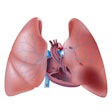Sunday, November 26 | 10:55 a.m.-11:05 a.m. | SSA12-02 | Room S403A
In this scientific session, researchers will describe how a deep-learning algorithm can provide an objective measure for assessing the malignancy risk of a lung nodule.A lung nodule's risk of malignancy is one of the important factors considered in determining the next step in clinical management; accurate and objective risk stratification will reduce variability in how patients are managed and lead to better outcomes, according to Dr. Jae Ho Sohn, a resident physician at the University of California, San Francisco (UCSF) Medical Center.
Sohn noted that lung cancer data are favorable for deep learning due to the amount of data available from lung cancer screening trials and the consistency in imaging techniques -- that is, low-dose chest CT.
"Imaging features [of lung nodules] are relatively simple compared to other tumors," Sohn said. "Therefore, this is a relatively technically easier problem to tackle using deep learning."
After training a 3D convolutional neural network (CNN) using image data from 1,600 patients in the National Lung Screening Trial, the UCSF team found that the algorithm could automatically assess a lung nodule's risk of malignancy at an area under the curve of 0.892.
"There is inherent subjectivity in deciding a pulmonary nodule's chance of malignancy among radiologists," Sohn said, and, therefore, such an objective measure will be important.
The research also has some technical implications, he added.
"From the perspective of a machine-learning engineer, this study explores and brings us intuition on how to converge a 3D CNN," Sohn told AuntMinnie.com. "3D CNN is a very underresearched area in deep learning, but it is very relevant for analyzing cross-sectional imaging in radiology. Most intuitions from 2D CNN fail for 3D CNN, so this experience will allow us to more easily generalize deep learning to other computer-vision problems in cross-sectional imaging."




















